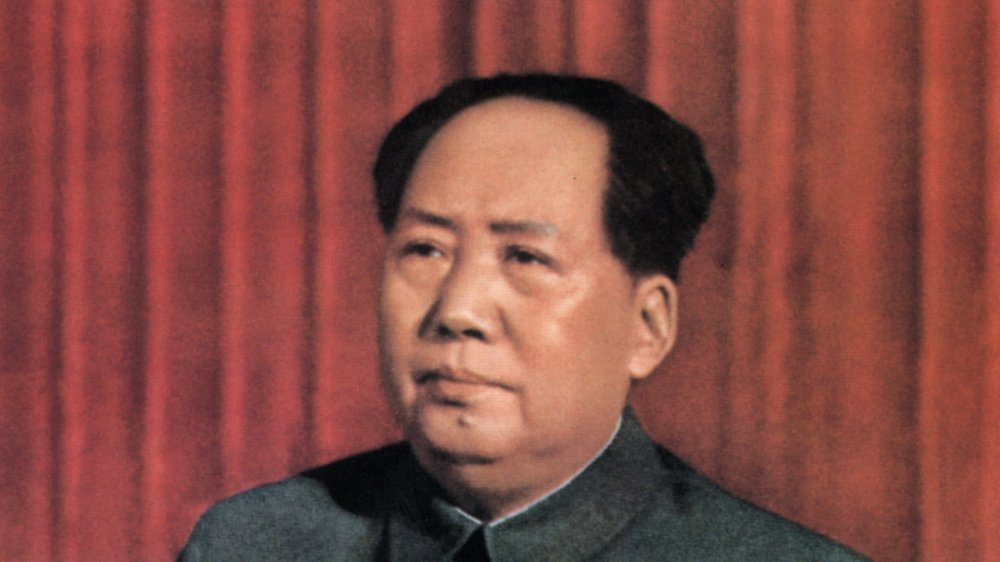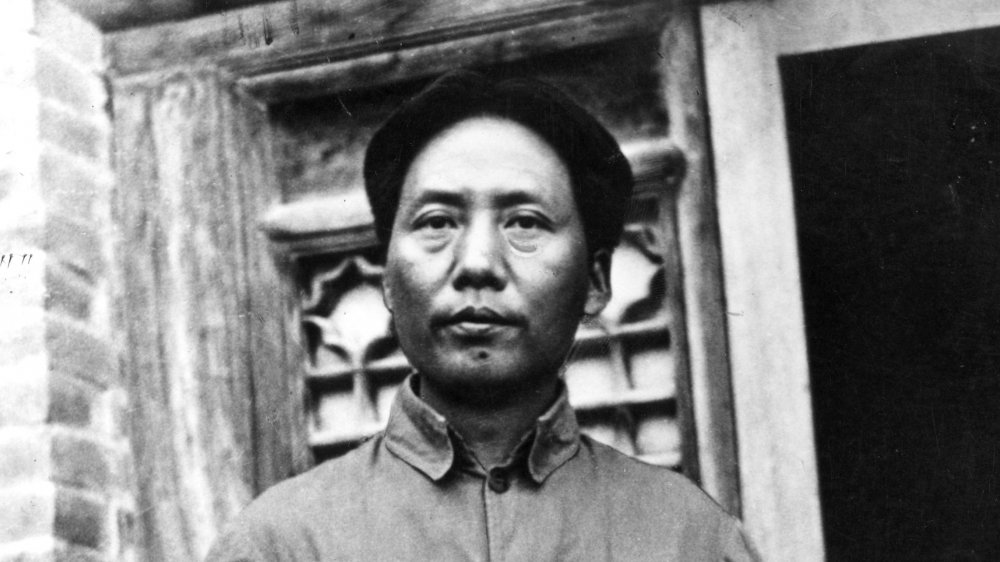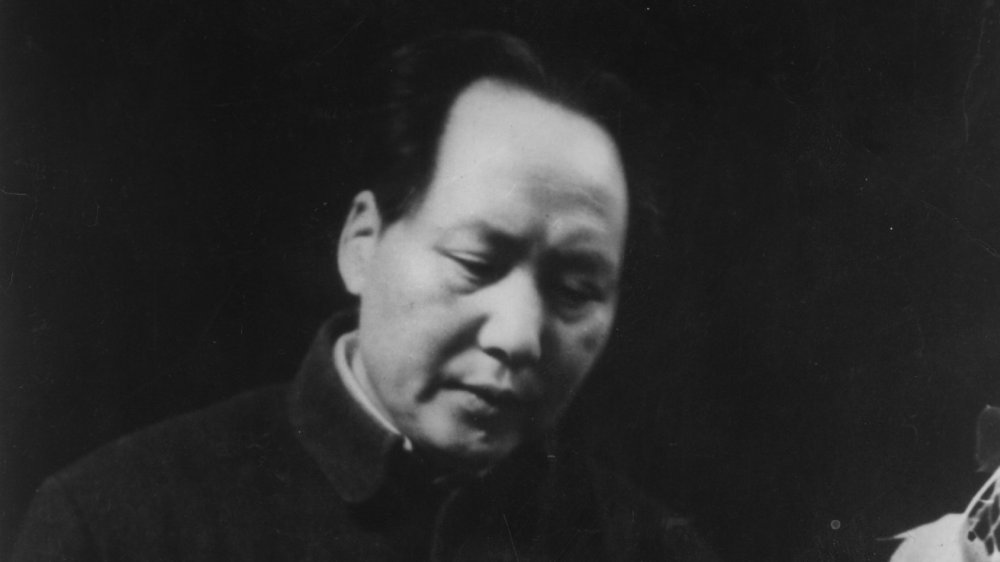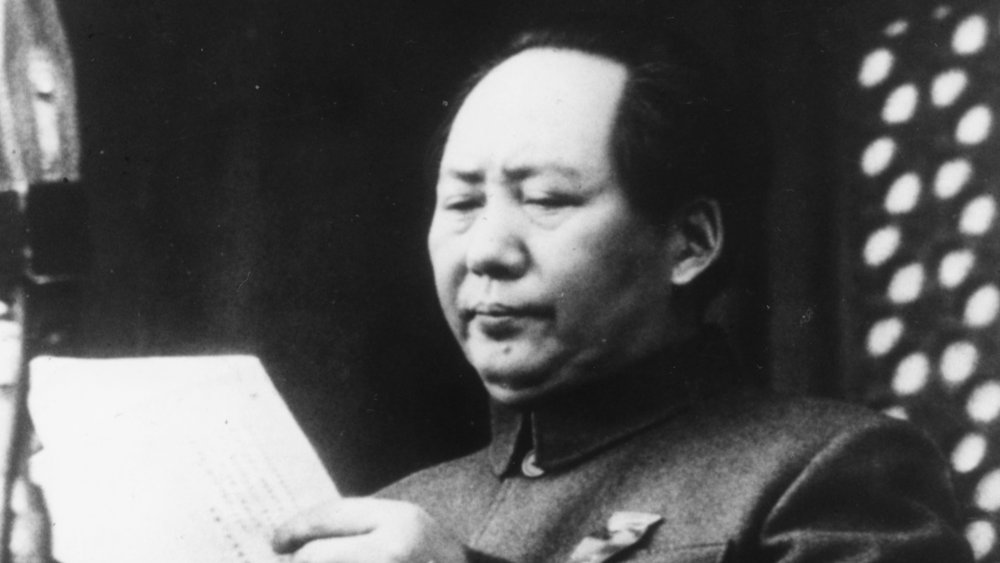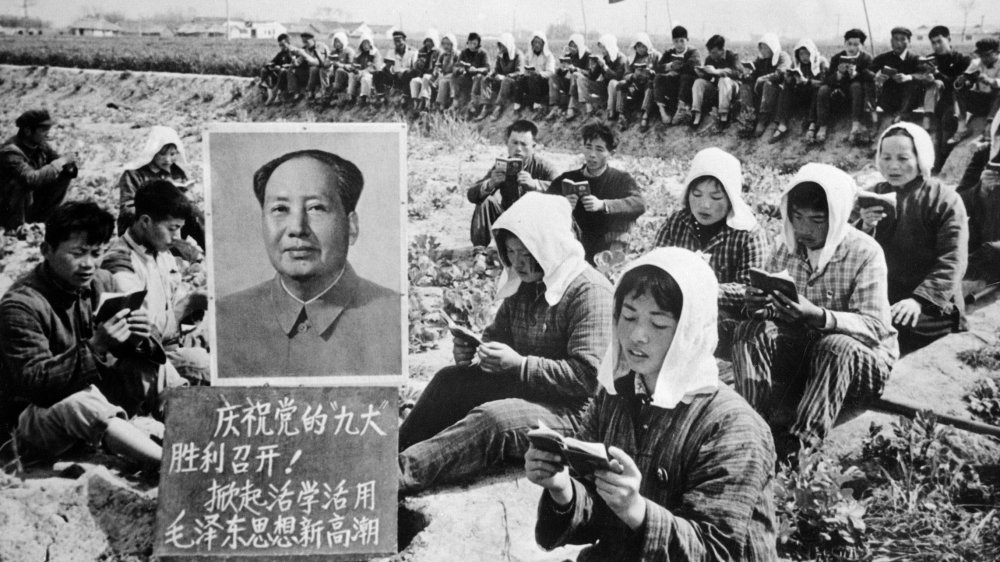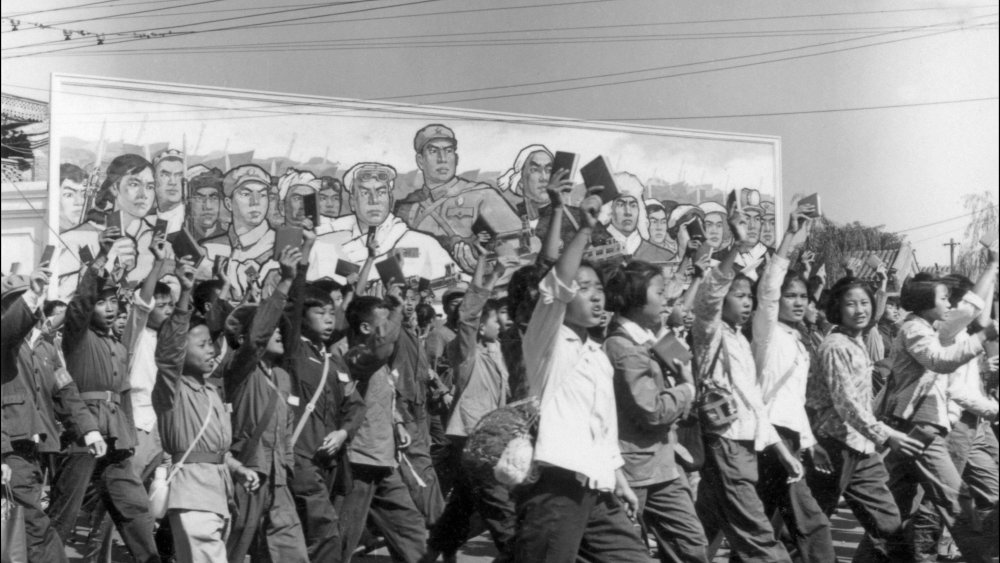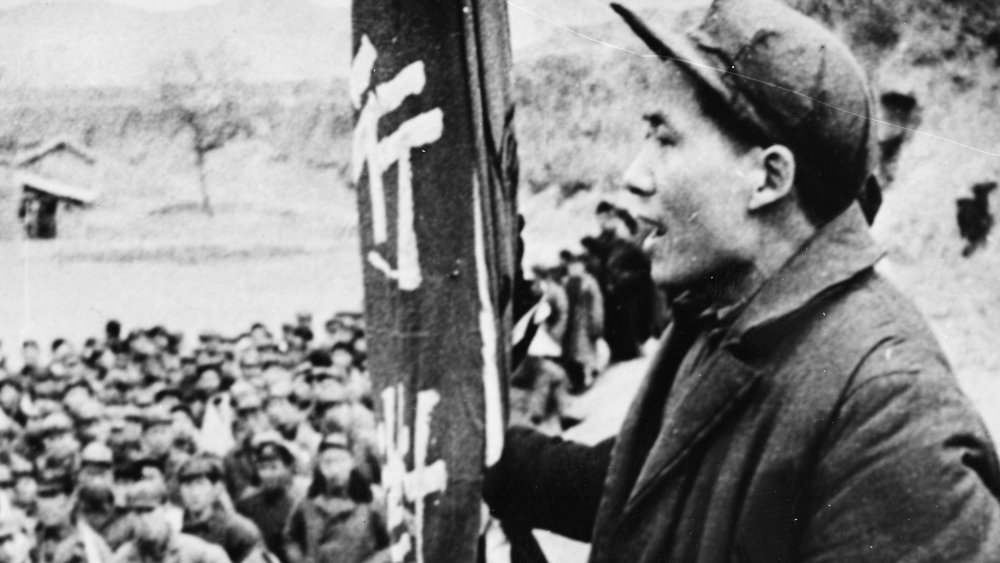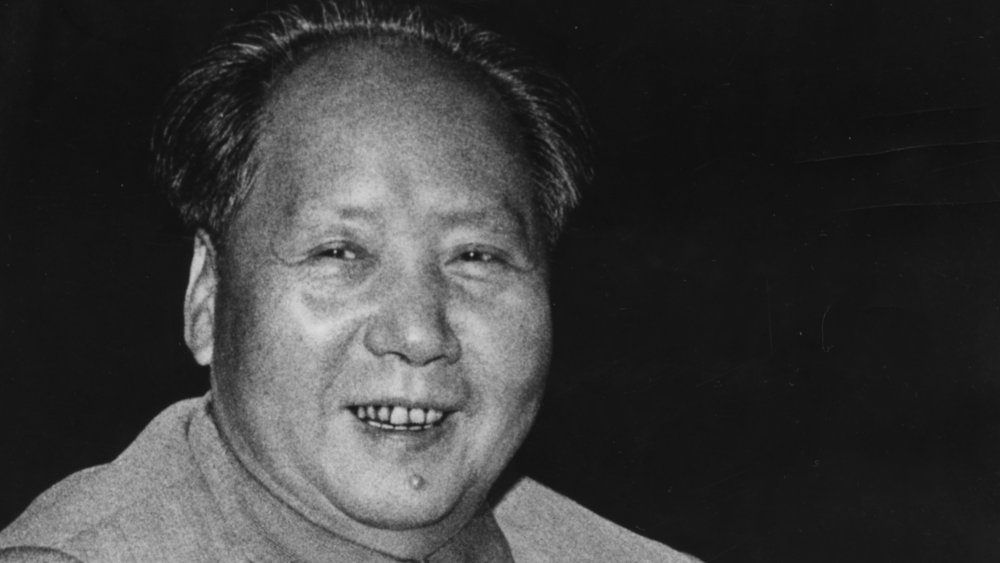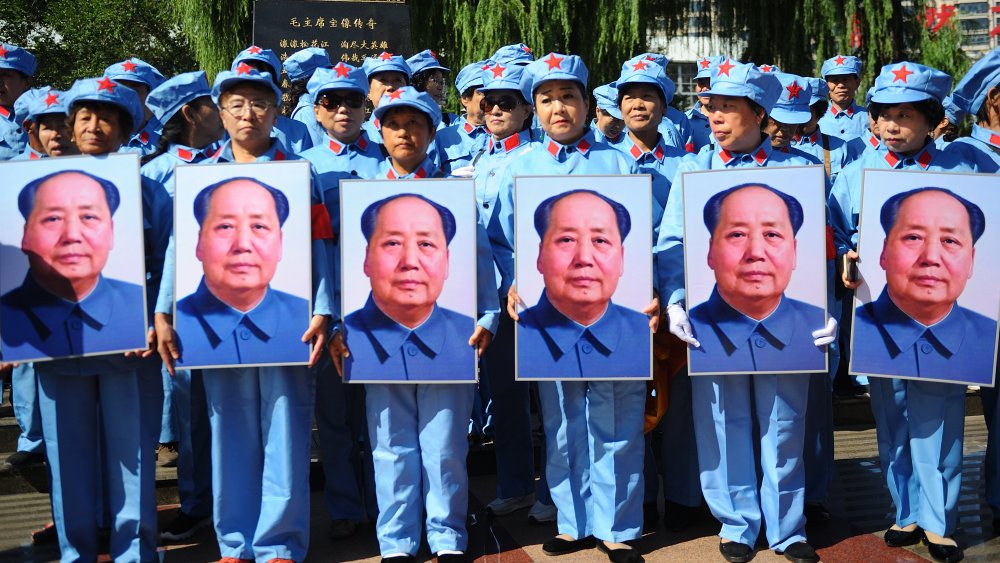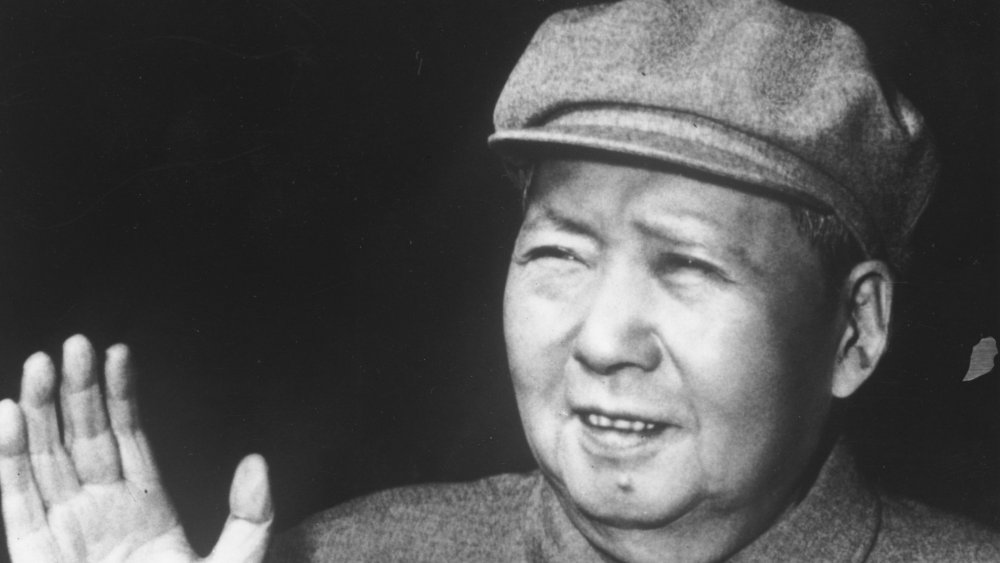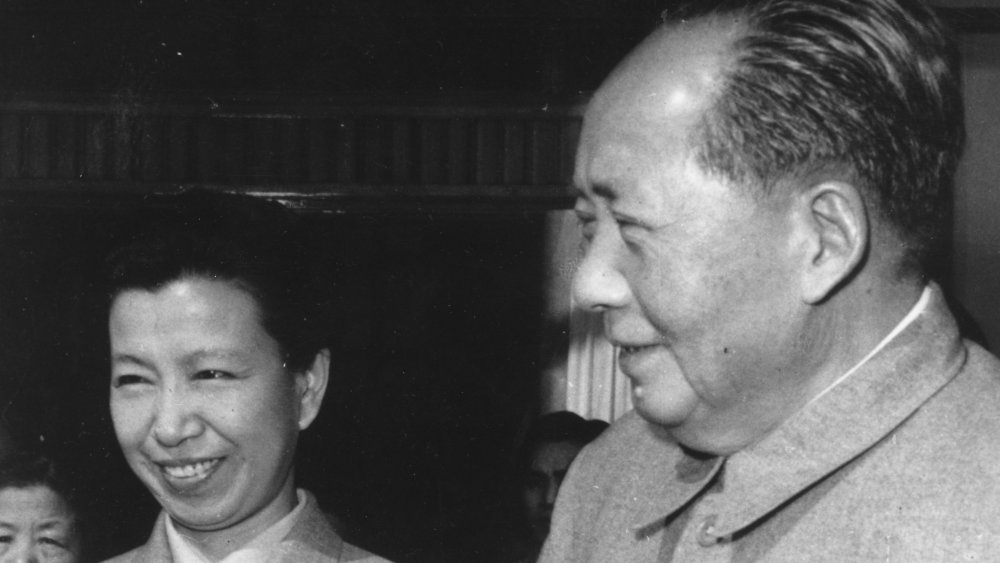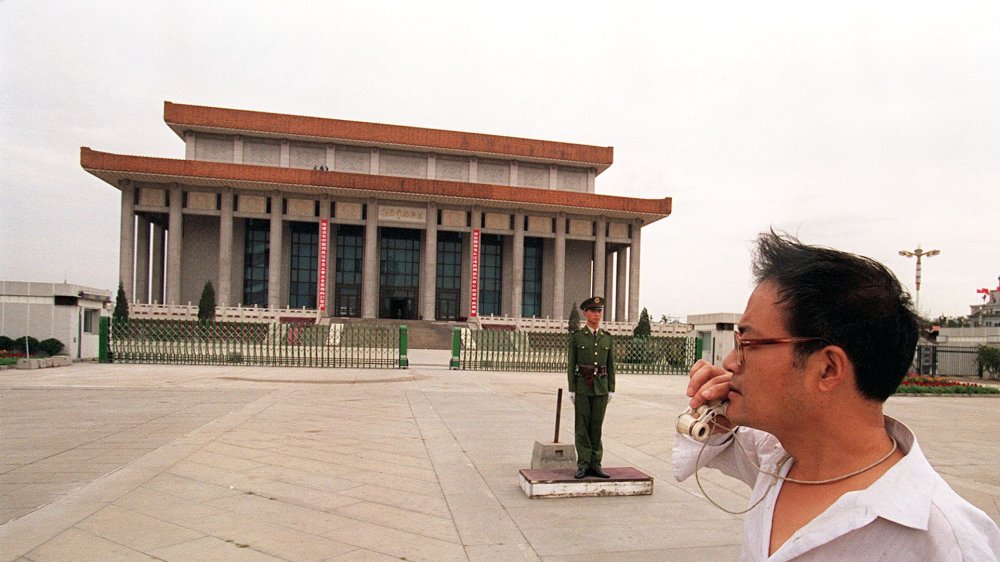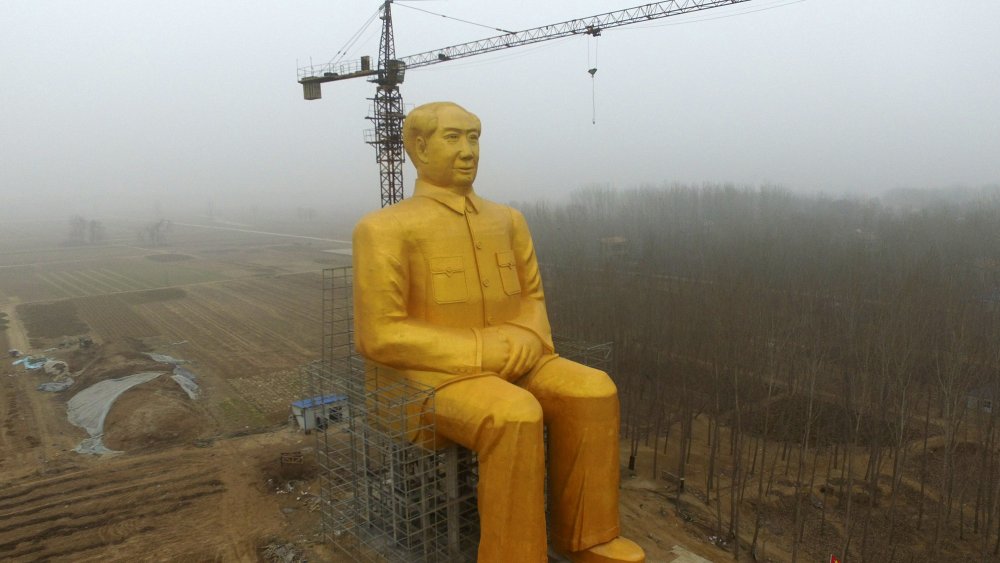The Messed Up Truth Of Mao Zedong
Mao Zedong: The Communist revolutionary and founding father of the People's Republic of China. The man who dragged "The Middle Kingdom" kicking and screaming into his particular brand of The Future, which sometimes involved plenty of actual kicking and screaming. As the New York Review of Books tells us, he was a tyrant whose policies and decisions caused the deaths of an estimated 42.5 million people ... though the Los Angeles Times estimates the figure could be as high as 80 million people, which incidentally means his death toll may well be higher than Joseph Stalin and Adolf Hitler put together.
While most people are at least passingly familiar with the atrocities of Hitler and Stalin, there's a possibility you may have missed the ones Chairman Mao committed. After all, he did his thing in "distant" China, and thus avoids being mentioned in some of the more Europe-centric history writings. Let's fix that by taking a long, hard look at the messed up truth of Mao Zedong.
Mao Zedong maintained a quota of death
Despite the absurdly high body count history has placed on his shoulders, Mao Zedong didn't exactly walk around China killing millions of people with his own hands. However, that's not to say he didn't find a way to have a personal touch. According to South China Morning Post, historian Frank Dikotter says Mao didn't merely ignore a significant portion of his people to death. Instead, he actually gave his peasant supporters an official quota for killing "landlords," who in reality were mostly just ordinary farmers and their families. The quota was "one per thousand members of population," meaning the Chairman specifically ordered his countrymen to kill 0.1 percent of the population ... though he was reportedly just fine with a death toll of up to three per thousand.
The reason behind this ruthless order was as pragmatic as it was horrifying. Mao's goal was to make his people bloody their hands personally, so everyone had committed terrible deeds in the rise of Mao's regime. This means they had plenty of reason to fear the potential return of the old rule, which they now had personally (and bloodily) helped to overthrow.
Mao Zedong's 'Great Leap Forward' was a disaster
Mao Zedong was a man with big dreams, and unfortunately, he also tried to make them become real — regardless of whether they were possible. We're talking, of course, about the Great Leap Forward, which ThoughtCo tells us was Mao's attempt to modernize China's farming society into an industrial one. There was just one problem: He tried to do this in just five years.
From 1958 to 1960, China moved millions of people into communes with specific tasks, such as manufacturing or farming. Mao also wanted to make China a self-sufficient steel producer, so people had to set up "backyard steel furnaces" and meet strict production quotas. Unfortunately, as Professor Vaclav Smil (via PubMed Central) notes, former farmers proved to be less than proficient at suddenly producing top-quality steel, and the end product tended to be brittle and unusable.
Meanwhile, Mao used absurd Soviet notions of farming to increase crops while also pulling more and more workers from farming to manufacturing. His farming tactics managed to harm "countless acres of farmland," while all those peasant-run smelters required people to chop down forests, which in turn led to erosion. The environmental damage the Great Leap Forward caused was horrendous. The human suffering from it and the famine that soon followed was even worse.
Mao Zedong and the Great Famine
Between 1959 and 1961, China went through the ominously named Great Famine, and according to Professor Vaclav Smil (via PubMed Central), the name was well-deserved. It is considered to be the largest famine in all of human history. In less than two years, millions of people starved to death, and although an unfortunate period of drought played a part, the tragedy was largely the result of Mao Zedong's ill-advised decision to initiate the Great Leap Forward, which completely failed to account for necessary food production. The pressures of the Great Leap also caused officials to submit completely fake reports of huge, record-breaking harvests, which meant that there was far more grain on paper than there was in reality.
Unfortunately, the crisis was just as badly managed as the events that led up to it. There was no food surplus to fall back on, either, as the supply and demand of food had been pretty much equal before disaster struck. The officials also took their sweet time even acknowledging the situation, and neglected to secure food aid in a swift manner. In the end, an estimated 30 million people perished because of the Great Famine, and as ThoughtCo tells us, the combined death toll of the Great Leap Forward and the famine could be as high as 48 million.
Mao Zedong's messed up Cultural Revolution
As ThoughtCo notes, Mao's disastrous experiments with the Great Leap Forward left him on the political sidelines for years. The Cultural Revolution was his move to reclaim power. According to the Guardian, this 10-year "period of political and social chaos" was officially supposed to revitalize the country, but most experts agree Mao was mainly out to get rid of his enemies ... and cement his own position as "the man who leads planet Earth into communism."
In May 1966, Mao unleashed the Chinese people to purge the Communist party's ranks by warning them that the party was secretly full of "revisionists" plotting a counter-revolution. The results were bloody. Red Guards and student gangs roamed the streets, tearing down "imperialist" signs and attacking whoever they felt was dressed in a "bourgeois" manner. Undesirable party officials, intellectuals, and teachers were popular targets, and the violence against them ranged from public humiliation to beatings and murder.
Before long, the country was in a state of borderline civil war, and by 1968 Mao realized that things had gone too far. He first attempted to calm down the situation by sending millions of city kids to be "re-educated" in the countryside. When that didn't work, he sent the army in. After years of military conflict, the Cultural Revolution officially ended in 1976. It killed up to two million people, and even the Communist party fully recognized it as a disaster.
Mao Zedong's 'little generals'
It's easy to see Mao Zedong's rule as a series of swooping, large-scale moves and decisions, simply because they influenced millions and millions of people. However, the true horror is perhaps easier to comprehend from an individual person's point of view.
As the Guardian tells us, Yu Xiangzhen was only 13-years-old when Mao kick-started his bloody Cultural Revolution in 1966. The schoolgirl read Mao's Little Red Book, wore the red armband of the Red Guards, and describes just how indoctrinated China's school system had made her and her fellow students, who she says were taught that Mao was closer to them than their own family. "When we saw Mao Zedong wave his hand, we all went berserk," Yu says. "We shouted and screamed until we had no voices left." It was with this same near-religious fervor that Mao's radicalized "little generals" set out to do their master's bidding. Yu remembers how they genuinely thought that people wearing too fashionable clothes or haircuts were monsters, and how they persecuted people. She remembers lynchings, and "hysterical mass rallies." One particular teacher was beaten up so badly, the screams kept everyone awake all night.
Yu says she never personally inflicted violence on anyone, and ultimately escaped the movement when she was ordered to beat up prisoners with a belt. She survived Mao's China, and in 2016 started a blog about her firsthand experiences with the atrocities of the era.
Mao Zedong seized power with a brutal civil war
Mao Zedong rose to power in a way that would ultimately reflect his time wielding said power: With considerable human tragedy. As Encyclopedia Britannica tells us, the Chinese Civil War was fought from 1945 to 1949 between Chiang Kai-shek's Nationalists and Mao's Communist forces, two parties that had already been vying for control for two decades. China had already been ravaged by the Second Sino-Japanese War, which basically pitted the Japanese forces against the Chinese military and the rising Communist movement in a draining three-way struggle, and millions had died of battle and starvation alike over the eight years before Japan's defeat.
With Japan finally out of the mix, both Nationalists and Communists rushed to claim as many vital strategic locations as possible. Despite several attempts to broker peace, extreme elements at both sides kept the conflict armed and violent, and ultimately, the tide turned in favor of the Communists. By 1949, even the Nationalists' longtime supporter, the United States, declared them a lost cause, and Mao's Communists emerged as victors. After a brutal civil war that killed an estimated 7.1 million people, the vast majority of China was now officially red.
Mao Zedong's unsavory personal habits
However high and mighty Mao Zedong was officially said to be, when you got up close to the Great Helmsman there was probably no mistaking him as anything other than human. A smelly, smelly human with terrible hygiene and personal habits. As Facts And Details tells us, Mao scoffed at baths, preferring instead to be rubbed down with hot towels and taking the occasional cold shower during wintertime. He didn't like brushing his teeth, and avoided dentists at all costs. At one point, pus was oozing out of his gums and his teeth reportedly looked like they were "painted green," thanks to his near-total aversion of dental hygiene and tendency to chew tea leaves. He could also come off as quite vulgar: He might attend meetings in his pajamas or even naked, and it wasn't unknown for him to randomly unbuckle his belt and start fishing for lice inside his pants.
It would be unfair to say that Mao was a complete Pig-Pen, though, as he very much enjoyed the finer things in life. For instance, while his people starved, he was a full-on gourmand who indulged in rare and expensive delicacies, including a special type of fish that had to be imported from 600 miles away in water-filled plastic bags to keep them alive. He was a guy who praised the values of "the hard life" and wore a patched robe — but the patches were actually highly expensive and custom-tailored.
Mao Zedong nurtured a creepy cult of personality
It takes a lot to keep a country as vast as China under your thumb, and as the Guardian and South China Morning Post tell us, Mao Zedong did this with a very special secret weapon: He turned himself into the central figure of a cult-like movement. The second the Communist red flag was raised in Beijing, another soon-to-be-important symbol arose over the gates of the Forbidden City: a portrait of Mao himself. From that moment on, Mao's pictures were highly visible in workplaces and schools alike. The Great Helmsman made sure that there were always plenty of songs about his greatness, and that it was compulsory to study the "Mao Zedong Thought."
As a result of this constant exposure, Mao became something of a "godman" or a "folk deity" — a demigod character of sorts, whose defining characteristic in the public eyes is his greatness. The Chinese tradition reportedly considers such figures to be simultaneously divine and very much human — and handily enough for a dictator responsible for millions of deaths, they're thought to be above such puny categories as "good" and "evil."
Mao Zedong 're-educated' dissidents in brutal labor camps
Revolution in a huge country is the sort of business where lots of people are bound to disagree with you. As the Atlantic tells us, Mao Zedong's Communist regime dealt with many dissidents by placing them in laogai ("re-education through labor") camps. Of course, these were not exactly nice summer camps with schoolrooms to memorize Mao's Little Red Book. They were full-on labor camps modeled after the Soviet gulags, and the prisoners were used as free labor and forced to fill brutal quotas.
According to a 2013 interview with Harry Wu, a man who spent 19 years in a Mao-era laogai for expressing opinions that were not in line with the Communist party's preferences, laogai camps persist even today ... though they are often hidden behind harmless commercial names that help trade. Reportedly, they use all sorts of tricks to seem semi-legitimate on paper: For instance, Wu recounts a story from his own laogai days, when a "worker" hadn't been able to meet his quota. To be able to say that they didn't hit him, the officials tied the man up and stripped his torso bare, then sent him "tumbling into a ditch" to tear up his body and face.
Mao Zedong and women
Mao Zedong, as Facts and Details reports, was quite fond of the ladies. He was married no less than four times, but this doesn't mean he didn't enjoy the occasional, uh, extracurricular activity as well. According to Mao's longtime personal doctor, Li Zhisui, It was not uncommon for the Chairman to become ... involved with multiple young ladies at once, and there were at least two separate accusations that he acted "like an emperor with 3,000 concubines." His proclivity only grew stronger as his age advanced. As he grew older, Mao became an advocate of Taoist practices, and started viewing his trysts as a means to acquire energy and "extend his life." He was even known to instruct women to prepare for him by reading Taoist literature on the subject.
Thanks to his status, Mao wasn't exactly short of adoring members of the prettier gender. However, his activities were by no means restricted to women. His male attendants tended to be rather easy on the eye, and he was known to require them to give him a nightly massage (or rather, "massage") to help him sleep.
Mao Zedong's undignified end
All things must come to an end, and as Rare Historical Photos tells us, Mao Zedong's era ended in 1976. The 82-year-old Chairman had been somewhat worse for wear for years, thanks to the multiple heart and lung troubles the longtime smoker had suffered from. Some (unconfirmed) reports also indicate he may have had Lou Gehrig's disease and Parkinson's disease.
Mao may have been a borderline divine figure during his lifetime, but ironically, his wishes about what should happen afterwards were happily ignored. As the Guardian reports, Mao had specifically requested that his body be cremated, but the Communist party officials decided to embalm it instead. As such, Mao's mortal remains were subjected to a highly experimental embalming process that reportedly involved an inexperienced team, meddling by party officials, and even a morbid mishap where the Chairman's head swelled up "like a football." Mao's embalmed body eventually went on display in a mausoleum in Beijing's Tiananmen Square (pictured), where hundreds or thousands of visitors enter its dimly-lit chamber every day to gawk at Mao's orange-lit "sallow waxy face."
Mao Zedong is still 'worshipped' in China
As the New York Review of Books tells us, China has admitted that Mao Zedong made some mistakes. However, the ratio of his admitted mistakes and official infallibility appears to be roughly 30-70, and he remains an incredibly esteemed figure in the giant country. This juggling act between the Great Helmsman's personal cult and his admitted mistakes can get downright weird: For instance, there's a popular Beijing brewery called the Great Leap. Though they claim they're actually named after a little-known song instead of the events that created the most terrifying famine in history, they still have no qualms about using "a Mao-era symbol of a fist clenching a beer stein" as a logo.
Such is Mao's confusing role in the annals of modern China. As the Daily Beast reports, the Chairman has become a "memetic figure" who might not be universally revered, but continues to be prominently featured during official celebrations and, of course, on all sorts of merchandise. To best illustrate this controversy, one needs to go no further than the Henan province, one of the areas that experienced the most difficulties during the Great Leap Forward. In 2017, they erected a 120-foot, gilded statue of the very man who engineered their suffering.
